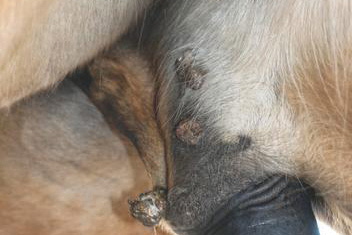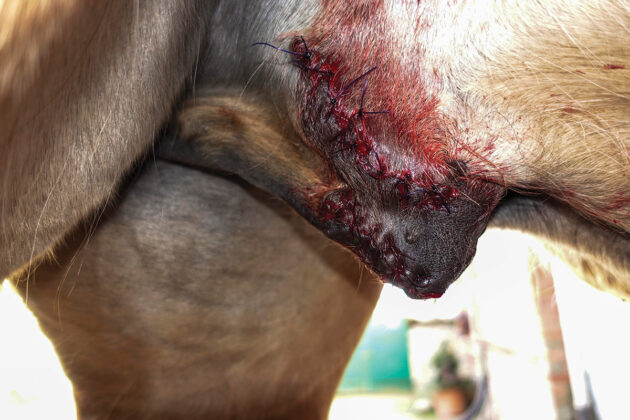If the sarcoid is located in an area where it interferes with a horse’s ability to function well (like near his eyelid or sheath), or if it’s in an area where a halter, saddle or other tack rests, it may be necessary to investigate how to limit its growth or remove it entirely.
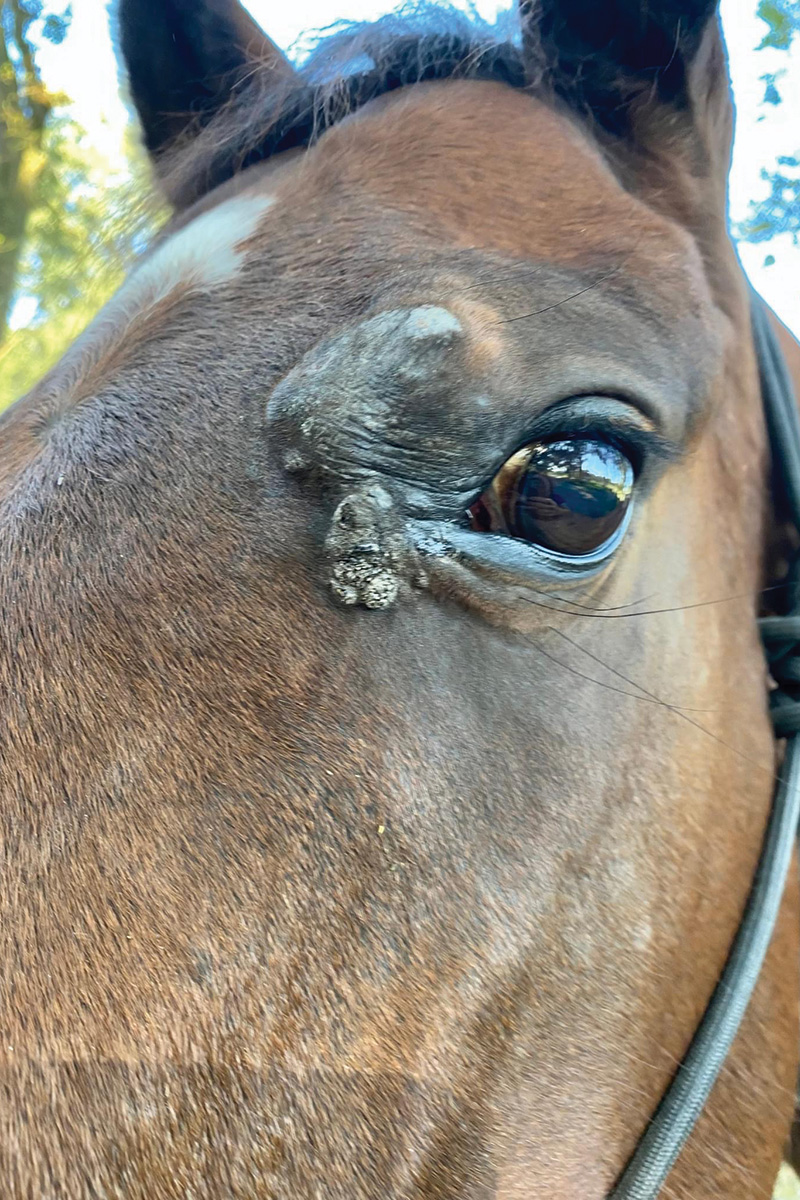
What Are Sarcoids in Horses?
The cause behind sarcoid development isn’t entirely clear, but there is strong evidence to suggest that the condition is instigated by a bovine papillomavirus, which is what makes these tumors so tricky to address. Sarcoids don’t behave like traditional tumors. There is also some indication that a genetic predisposition may be at play in the condition.
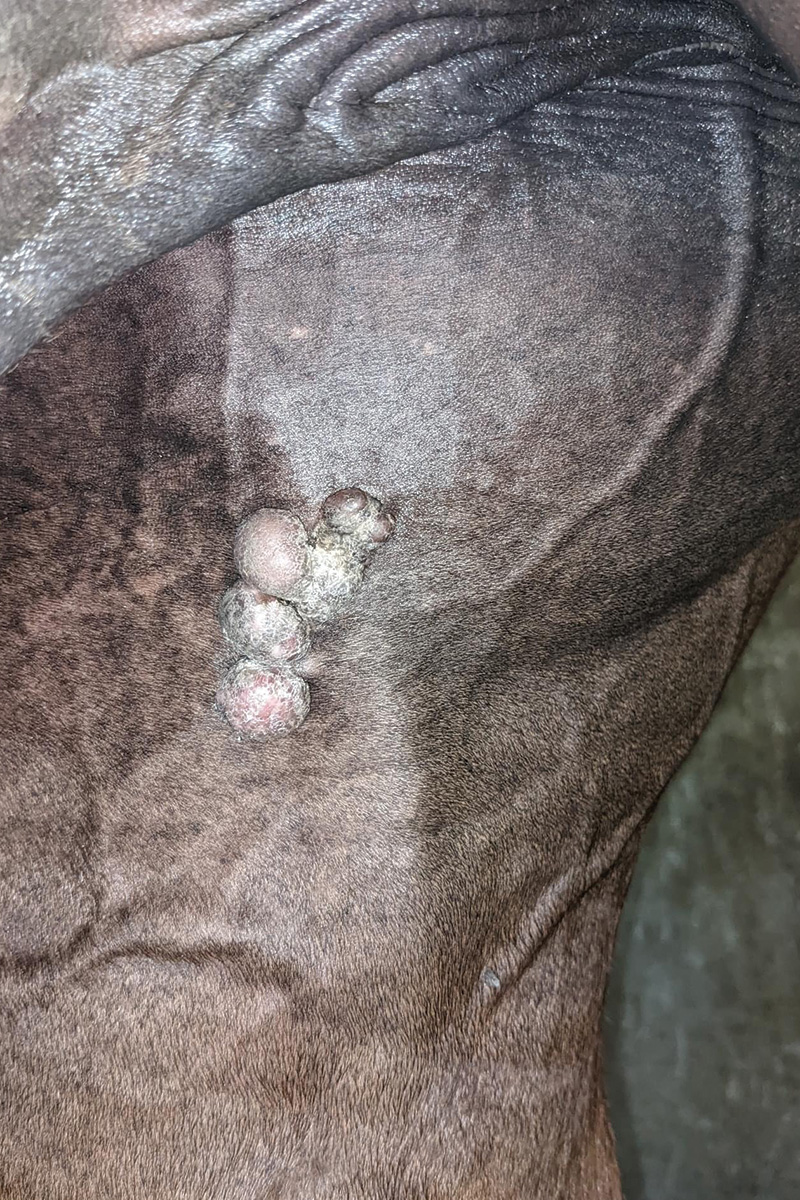
Any color, breed or gender of horse, donkey or equid can be affected by sarcoids, but young to middle-aged horses are most commonly affected. Sarcoids can be found across the globe, but there are some factors that may predispose horses to sarcoid formation, including the presence of cattle and flies, which may transmit the virus.
Sarcoids are made of abnormally dividing fibroblast cells, explains Elizabeth H. Yorke, DVM, Dipl. ACVS, of Springhill Equine Veterinary Clinic in Newberry, Fla. “They’re really common—actually the most common tumor horses get, with an estimated 2 percent of the equine population affected.”
Although sarcoids can become impressive in size and scope, they’re not usually regarded as life-threatening, explains Rana Bozorgmanesh, BVM, DACVIM, MRCVS of Steinbeck Peninsula Equine Clinics in Menlo Park, Calif. But it’s important to remember that what can be seen is the tip of the iceberg, she says.
Sarcoids infiltrate local tissue with fingerlike projections and are much more involved than what can be seen on the surface of the horse’s skin. Malevolent sarcoids, a particularly aggressive type of, spread along lymph vessels, according to Bozorgmanesh.
Sarcoids can occur nearly anywhere on the body, but there are some spots where they more commonly develop, says Yorke. These areas include on the face (especially around the eyes and ears), chest, groin, sheath, underside of the abdomen, inside the back legs and at sites of previous wounds, particularly on the legs. They can occur singly or in multiples; they can occur on one part of the body or over many sites.
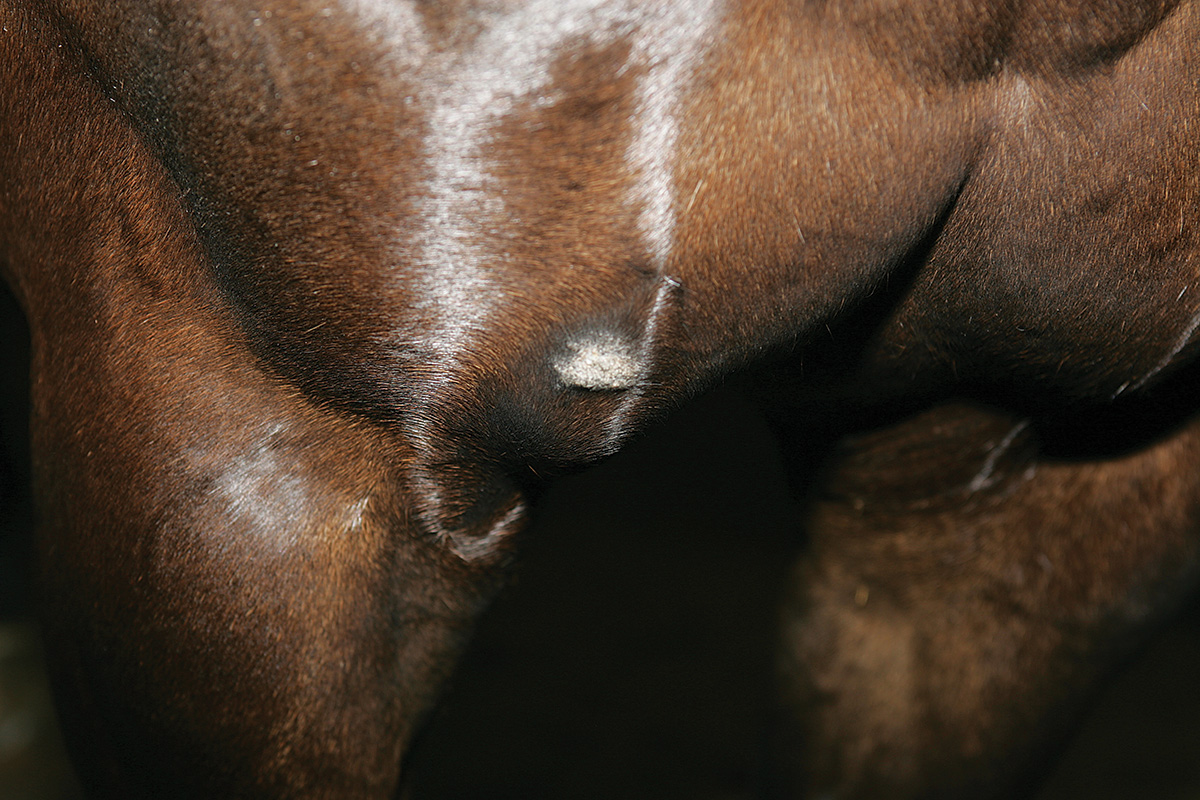
What to Look For
It can be difficult to detect sarcoids in their beginning stages, and they can be well hidden in a horse’s coat. There are six different types, each with a different appearance.
“Sarcoids often look like warty, crusty, bumpy skin growths, but there’s a lot of variation in their appearance,” says Yorke. They can stay small for years, just looking like a grayish wart or a patch of bald skin, but then can start changing—and things can get ugly fast.
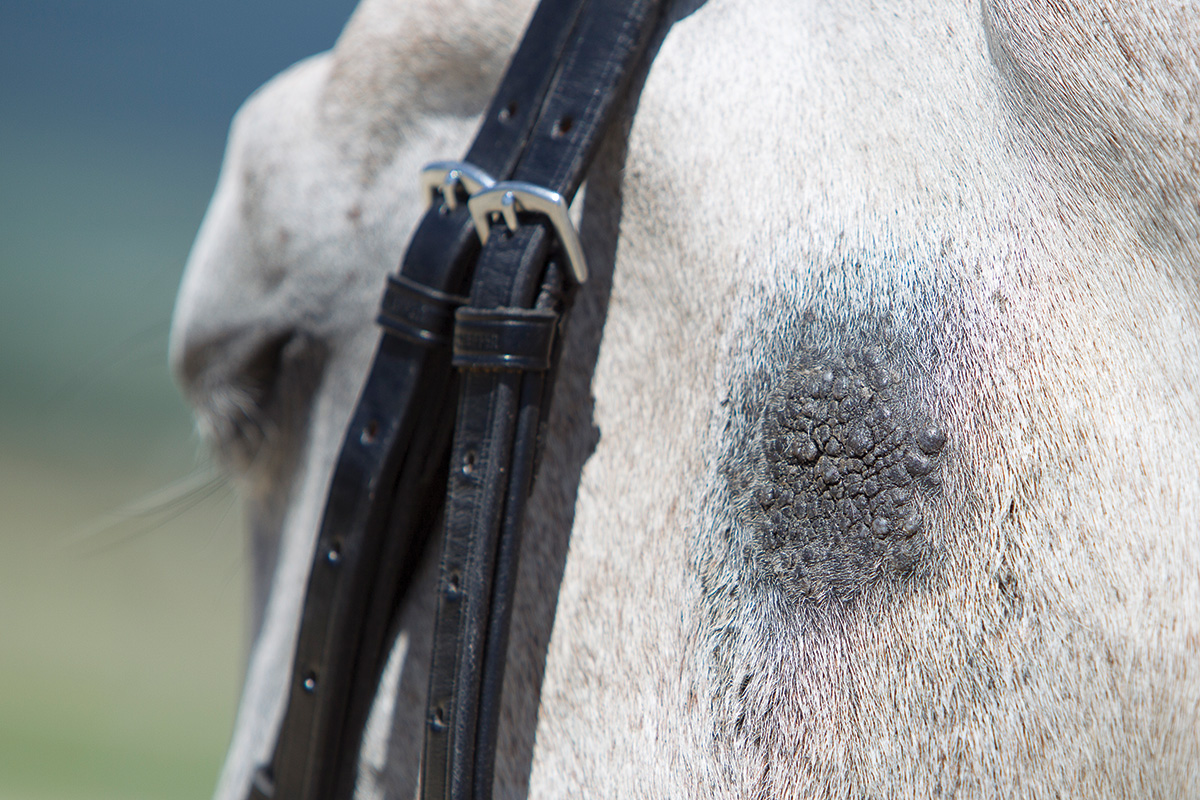
It’s important to have a vet peek at anything unusual on a horse’s body. While a small hairless patch may not necessitate a vet visit, having the vet take a look while she’s out for another reason (such as the spring wellness exam) is beneficial. The vet will be able to rule out other conditions and begin to develop a plan in case the sarcoid begins to grow.
As sarcoids enlarge, the skin can ulcerate, attract flies, and become infected, Yorke explains. They may look like open sores that won’t heal.
“Sarcoids can be very challenging to treat, so I recommend owners take them seriously, even if they don’t look like they’re currently causing a problem,” she says.
What are the Treatment Options for a Horse with Sarcoids?
Sarcoids are only positively diagnosed with a biopsy. Once a vet has confirmed that the horse has a sarcoid, there are multiple therapies that can be used to combat the condition, some of which may be used in combination.
“There are so many factors to consider when deciding on a treatment protocol, including the type of sarcoid, how aggressive it is, its location and size, how well the horse is likely to tolerate a particular treatment, cosmetic outcome and more,” says Bozorgmanesh.
Also taken into consideration are location of equine clinics (should in-hospital surgery be warranted) and the client’s financial capability.
In the past, horse owners were encouraged to leave a sarcoid alone unless it was growing or changing, but as sarcoid treatments have evolved, it’s been recognized that early intervention may be more successful.
“It’s easier to treat small sarcoids, and less-aggressive treatments may also be an option if the lesions are caught early,” says Yorke. It’s very rare for a sarcoid to go away on its own.
Because they are caused by a virus, treatment is not as simple as just cutting off the tumor, she adds.
“Unfortunately, even if all the tissue that looks like sarcoid is surgically removed, the ‘normal’ looking tissue adjacent to it can still be infected by the virus, and it can then be activated into new sarcoid tissue,” Yorke notes. “It’s very important that your equine veterinarian is consulted to create a treatment plan. Inappropriate treatment can quickly turn a small lesion into a larger and more aggressive one. So please don’t buy some ‘cure-all cream’ off the internet to treat your horse’s sarcoid—you may regret it later.”
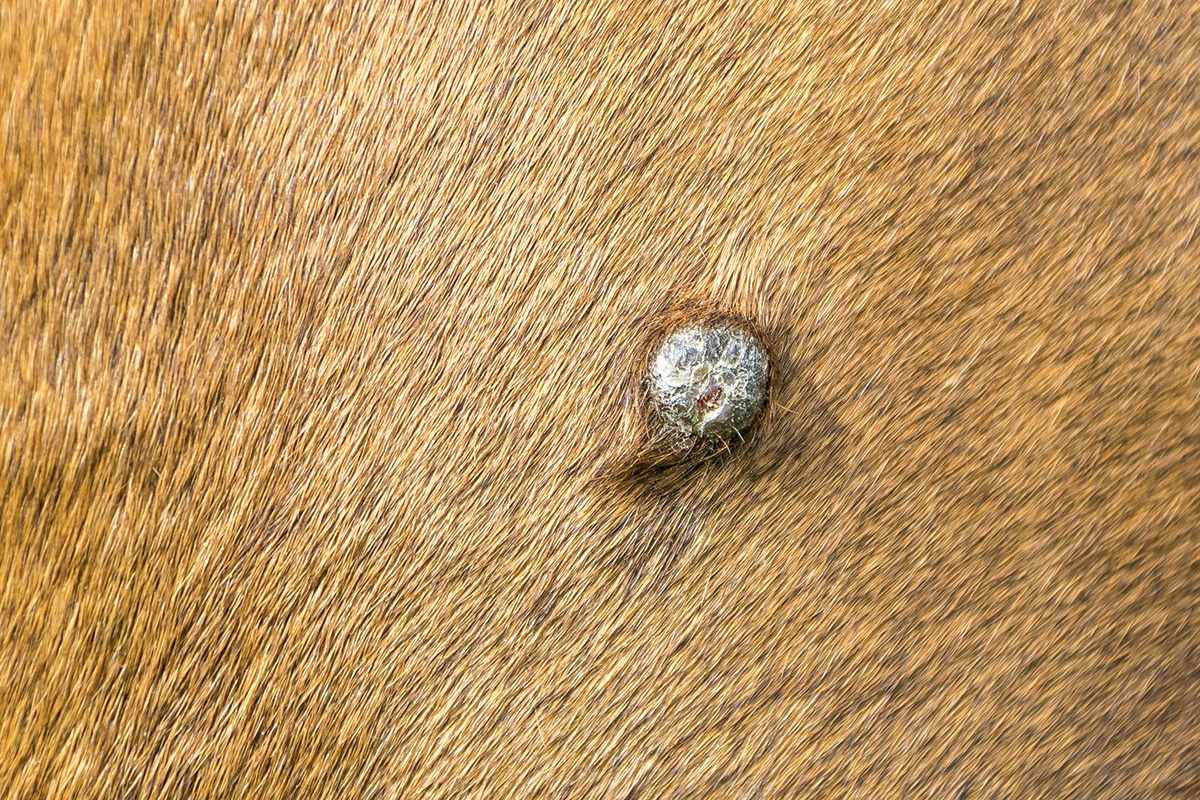
Treatment options can include:
◆ Veterinary-grade topical ointments: There are a variety of options available, and you can apply it yourself; you’ll have to wear gloves and put it on every few days. However, it can take up to 32 weeks of treatment for the sarcoid to resolve, and some horses may experience a burning sensation when it’s applied, says Bozorgmanesh.
◆ Injection of chemotherapy into the tumor: Injecting cisplatin, a chemotherapy agent, is one of the most successful ways to treat sarcoids. If the tumor is large, the vet will often try to surgically remove as much of the tumor as possible before treating the scar line and the tissues around it with cisplatin, Bozorgmanesh explains. The injections are often repeated every two to three weeks for four to six treatments. Depending on the location, this treatment may need to be done under general anesthesia.
◆ Injection of immune modulators into the tumor: Immunomodulators are natural or synthetic substances that can modify the body’s immune response by either suppressing or stimulating the immune system.
◆ Injection of immunostimulants into the tumor: A newer treatment for sarcoids, this modality focuses on increasing specific aspects of the immune system and its response. It has variable success.
◆ Surgery: When removing a sarcoid, the vet must excise large amounts of tissue in an attempt to remove every single tumor cell. Tumors often recur when using surgery alone.
◆ Cryotherapy: Extreme cold is used to freeze and remove abnormal tissue. This modality can require multiple treatments and may require general anesthesia.
◆ Lasers: A surgical laser is used to remove the tumor, along with a margin of healthy tissue to reduce the chance of leaving behind any potential cancerous cells. This technique may require general anesthesia or local anesthesia and sedation, says Bozorgmanesh.
There are also some specialty treatments like electrochemotherapy or radiation that can be very effective but are usually performed only at veterinary schools and require general anesthesia, according to Yorke.
“It’s also important to remember that any treatment may have to be changed or repeated if the sarcoid doesn’t respond well or comes back later,” she says. “That’s just the nature of sarcoids, and can happen despite everyone’s best efforts.”
The bottom line? Anytime something unusual is found on a horse, it’s worthwhile to have a vet take a peek at it to be sure nothing is amiss. Addressing sarcoids early offers horses the best chance for a complete resolution.
This article about sarcoids in horses appeared in the May 2023 issue of Horse Illustrated magazine. Click here to subscribe!
These Horse Care Tips are presented by CareCredit.

